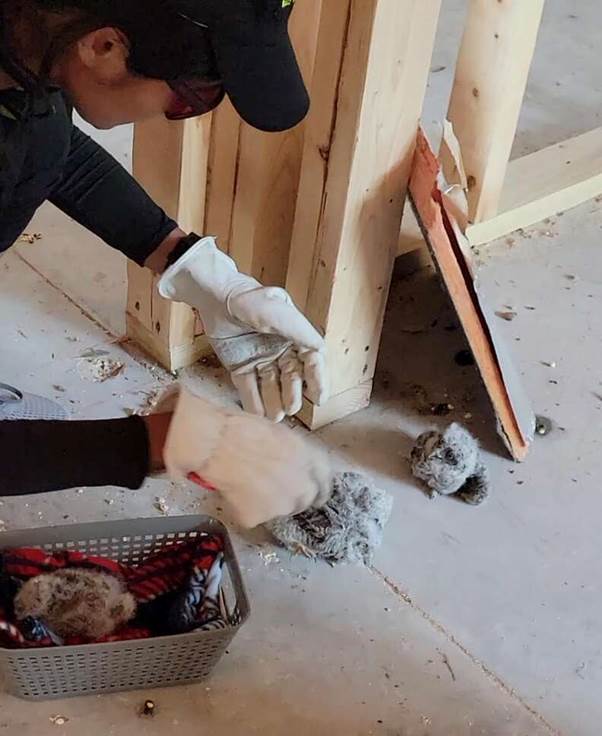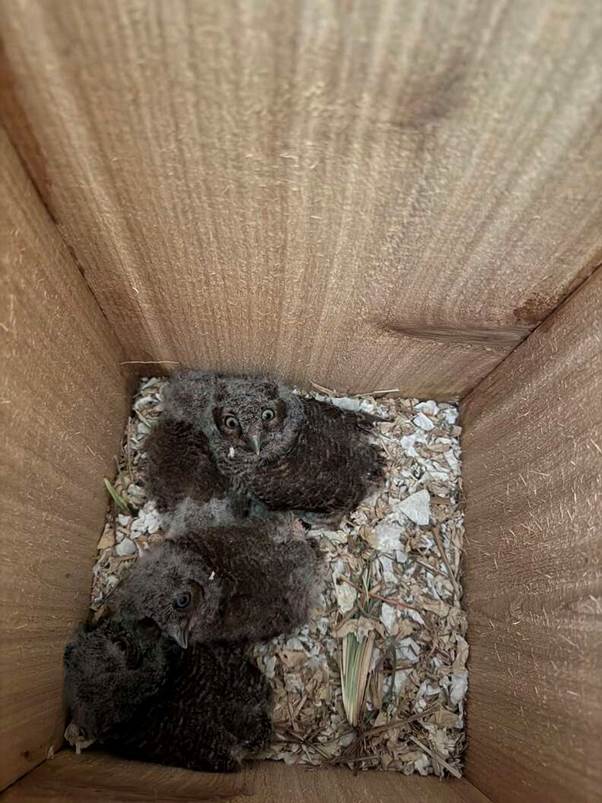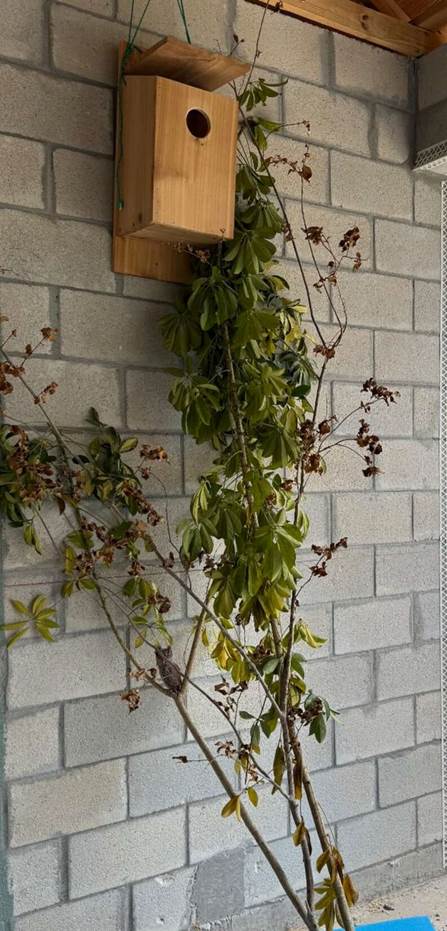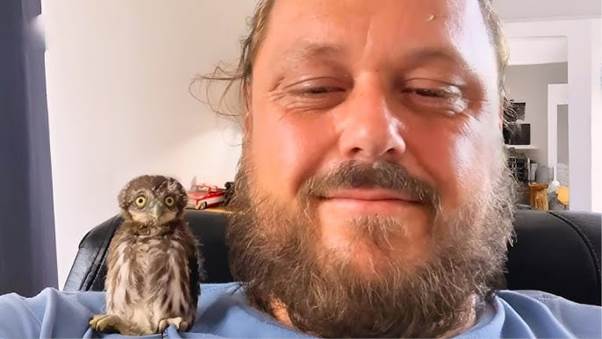At first, the noise on the construction site sounded routine — clanging tools, hammer strikes, and workers’ voices bouncing around the half-built structure. But then, in the middle of the bustle, came a completely different sound: high-pitched cries. Within seconds, the workers realized something unexpected had happened. From a torn air vent above, four fluffy screech owl babies had fallen straight to the concrete floor.
Startled and unsure what to do, the crew immediately contacted WILD Florida Rescue (WFR) for help. Volunteers Adriane and Lulu answered the urgent call, not knowing this would become one of their most delicate rescues yet.

A Family Suddenly Separated
When Adriane and Lulu arrived, they quickly assessed the situation. The babies were too young to fly, and while their frantic parents circled nearby, there was no way for them to scoop their little ones back into the nest.
Following guidance from Florida Fish and Wildlife, the team’s first attempt was to install a temporary nest box just outside the construction zone, giving the parents a safe alternative. But the owls had other ideas.
“The parents did not like that,” WFR shared. The adults refused to approach the box, leaving their babies hungry and alone through the night.

A Rescue Plan That Took Days, Not Hours
Realizing the first attempt had failed, the volunteers regrouped. Early the next morning, they carefully returned the nest box closer to the owls’ original spot inside the structure. This time, the parents swooped right in, resuming care for their chicks as if nothing had happened.
The relief was immediate, but the team knew there was still risk. Construction work continued, and the vent that had sent the babies tumbling once could easily do so again. To protect the owlets while still respecting the parents’ instincts, Adriane and Lulu tried one last adjustment.
They created a hybrid solution — a nesting box positioned between the inside and outside of the construction site. It gave the parents easy access but kept the little ones out of harm’s way. Finally, everyone — workers, rescuers, and owl parents — could breathe easier.

Watching The Babies Grow Stronger
To ensure the family remained safe, WFR installed cameras near the nest. Over the following weeks, volunteers monitored the owlets’ progress daily. What they witnessed was magical: the once helpless fluffballs slowly grew feathers, strength, and confidence.
Day by day, the little owls transformed into fledglings, stretching their wings and learning the lessons only their parents could teach. By keeping them with their family rather than moving them into human care, Adriane and Lulu had given the babies the very best chance at thriving in the wild.

Why Owls Sometimes Nest in Strange Places
Screech owls are cavity nesters, meaning they seek out small, enclosed spaces for their eggs and young. In natural settings, this usually means hollow trees. But as more wild areas are cleared for development, owls often adapt by nesting in chimneys, vents, or even attics.
While it may look unusual, this behavior shows just how resourceful wildlife can be. Unfortunately, it can also put both the animals and humans in difficult situations, like this construction site rescue. Experts recommend installing owl nesting boxes in safe areas nearby to give these birds better options — something homeowners and builders alike can consider.

A Rescue That Truly Came Full Circle
Not every wildlife rescue goes according to plan. Some require quick fixes; others demand patience, persistence, and creativity. For Adriane, Lulu, and the team at WFR, this mission had been nerve-wracking but worth every moment.
“We are so thrilled, even with all the work and worries, that these babies remained with their parents to fledge,” WFR celebrated in a post.
In the end, the construction workers got to continue their project, the volunteers ensured the owlets’ safety, and the owl parents were able to do what nature intended — raise their family together.
It’s a story that proves sometimes the best rescues are not about removing wildlife from danger but about finding ways to let families stay whole. And for these four owlets, that made all the difference.


